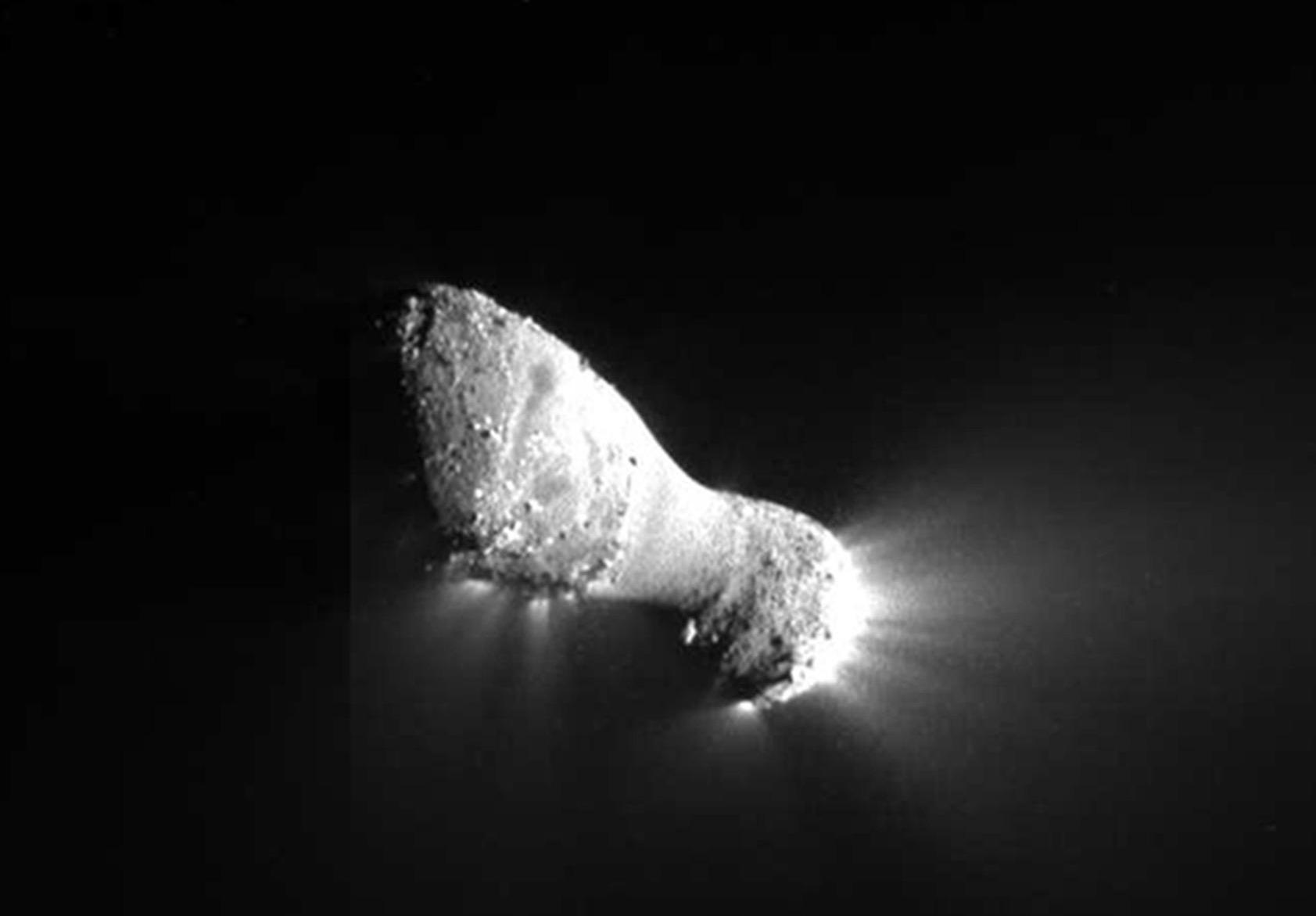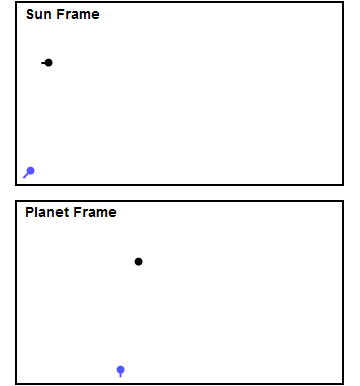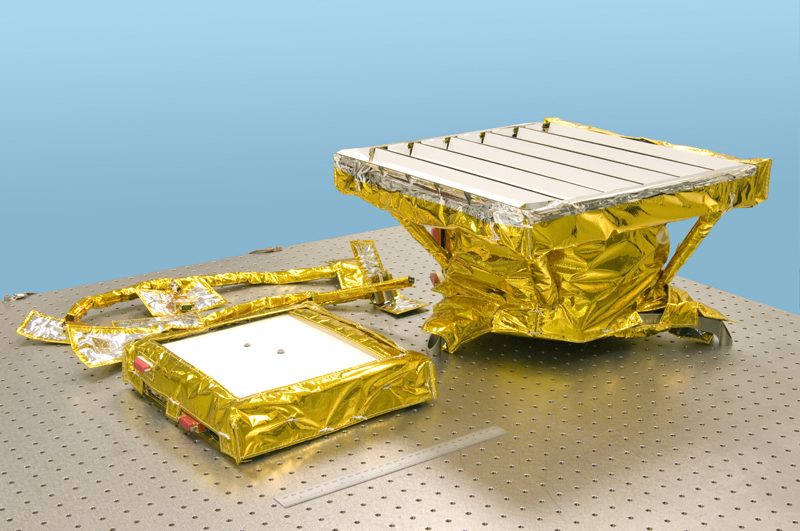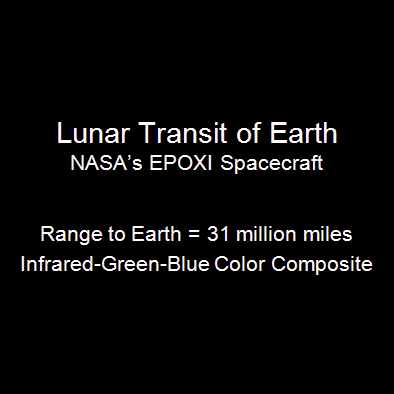|
Epoxi
''EPOXI'' was a compilation of NASA Discovery program missions led by the University of Maryland and principal investigator Michael A'Hearn, with co-operation from the Jet Propulsion Laboratory and Ball Aerospace. ''EPOXI'' uses the '' Deep Impact'' spacecraft in a campaign consisting of two missions: the ''Deep Impact Extended Investigation'' (DIXI) and ''Extrasolar Planet Observation and Characterization'' (EPOCh). ''DIXI'' aimed to send the ''Deep Impact'' spacecraft on a flyby of another comet, after its primary mission was completed in July 2005, while ''EPOCh'' saw the spacecraft's photographic instruments as a space observatory, studying extrasolar planets. ''DIXI'' successfully sent the ''Deep Impact'' spacecraft on a flyby of comet Hartley 2 on November 4, 2010, revealing a "hyperactive, small and feisty" comet, after three gravity assists from Earth in December 2007, December 2008 and June 2010. The ''DIXI'' mission was not without problems, however; the spacecraft ha ... [...More Info...] [...Related Items...] OR: [Wikipedia] [Google] [Baidu] |
103P/Hartley
Comet Hartley 2, designated as 103P/Hartley by the Minor Planet Center, is a small periodic comet with an orbital period of 6.46 years. It was discovered by Malcolm Hartley in 1986 at the Schmidt Telescope Unit, Siding Spring Observatory, Australia. Its diameter is estimated to be . Hartley 2 was the target of a flyby of the Deep Impact spacecraft, as part of the EPOXI mission, on 4 November 2010, which was able to approach within of Hartley 2 as part of its extended mission. Hartley 2 is the smallest comet which has been visited. It is the fifth comet visited by spacecraft, and the second comet visited by the Deep Impact spacecraft, which first visited comet Tempel 1 on 4 July 2005. Discovery and orbit Comet Hartley 2 is a small Jupiter-family comet having an orbital period of 6.46 years. It was discovered by Malcolm Hartley in 1986 at the Schmidt Telescope Unit, Siding Spring Observatory, Australia. It has the perihelion near the Earth's orbit at 1.05 AU from the ... [...More Info...] [...Related Items...] OR: [Wikipedia] [Google] [Baidu] |
Deep Impact (spacecraft)
''Deep Impact'' was a NASA space probe launched from Cape Canaveral Air Force Station on January 12, 2005. It was designed to study the interior composition of the comet Tempel 1 (9P/Tempel), by releasing an impactor into the comet. At 05:52 UTC on July 4, 2005, the Impactor successfully collided with the comet's nucleus. The impact excavated debris from the interior of the nucleus, forming an impact crater. Photographs taken by the spacecraft showed the comet to be more dusty and less icy than had been expected. The impact generated an unexpectedly large and bright dust cloud, obscuring the view of the impact crater. Previous space missions to comets, such as ''Giotto'', ''Deep Space 1'', and '' Stardust'', were fly-by missions. These missions were able to photograph and examine only the surfaces of cometary nuclei, and even then from considerable distances. The ''Deep Impact'' mission was the first to eject material from a comet's surface, and the mission garnered considerabl ... [...More Info...] [...Related Items...] OR: [Wikipedia] [Google] [Baidu] |
Gravity Assist
In orbital mechanics and aerospace engineering, a gravitational slingshot, gravity assist maneuver, or swing-by is the use of the relative movement (e.g. orbit around the Sun) and gravity of a planet or other astronomical object to alter the path and speed of a spacecraft, typically to save propellant and reduce expense. Gravity assistance can be used to accelerate a spacecraft, that is, to increase or decrease its speed or redirect its path. The "assist" is provided by the motion of the gravitating body as it pulls on the spacecraft. Any gain or loss of kinetic energy and velocity by a passing spacecraft is correspondingly lost or gained by the gravitational body, in accordance with Newton's Third Law. The gravity assist maneuver was first used in 1959 when the Soviet probe Luna 3 photographed the far side of Earth's Moon and it was used by interplanetary probes from Mariner 10 onward, including the two Voyager probes' notable flybys of Jupiter and Saturn. Explanation A ... [...More Info...] [...Related Items...] OR: [Wikipedia] [Google] [Baidu] |
Moon Mineralogy Mapper
The Moon Mineralogy Mapper (M3) is one of two instruments that NASA contributed to India's first mission to the Moon, Chandrayaan-1, launched October 22, 2008. It is an imaging spectrometer, and the team is led by Principal investigator Carle Pieters of Brown University, and managed by NASA's Jet Propulsion Laboratory. Description M3 is an imaging spectrometer that provided the first high-resolution spatial and spectral map of the entire lunar surface, revealing the minerals of which it is made. This information will both provide clues to the early development of the Solar System and guide future astronauts to stores of precious resources. This instrument is a Discovery Program "Mission of Opportunity" (a NASA-designed instrument on board another space agency's spacecraft). Chandrayaan-1 operated for 312 days as opposed to the intended two years but the mission achieved many of its planned objectives. M3 was used to map over 95% of the lunar surface in its low-resolution Glo ... [...More Info...] [...Related Items...] OR: [Wikipedia] [Google] [Baidu] |
EPOXI Moon Transits Earth
''EPOXI'' was a compilation of NASA Discovery program missions led by the University of Maryland and principal investigator Michael A'Hearn, with co-operation from the Jet Propulsion Laboratory and Ball Aerospace. ''EPOXI'' uses the '' Deep Impact'' spacecraft in a campaign consisting of two missions: the ''Deep Impact Extended Investigation'' (DIXI) and ''Extrasolar Planet Observation and Characterization'' (EPOCh). ''DIXI'' aimed to send the ''Deep Impact'' spacecraft on a flyby of another comet, after its primary mission was completed in July 2005, while ''EPOCh'' saw the spacecraft's photographic instruments as a space observatory, studying extrasolar planets. ''DIXI'' successfully sent the ''Deep Impact'' spacecraft on a flyby of comet Hartley 2 on November 4, 2010, revealing a "hyperactive, small and feisty" comet, after three gravity assists from Earth in December 2007, December 2008 and June 2010. The ''DIXI'' mission was not without problems, however; the spacecraft ha ... [...More Info...] [...Related Items...] OR: [Wikipedia] [Google] [Baidu] |
Spectrometer
A spectrometer () is a scientific instrument used to separate and measure spectral components of a physical phenomenon. Spectrometer is a broad term often used to describe instruments that measure a continuous variable of a phenomenon where the spectral components are somehow mixed. In visible light a spectrometer can separate white light and measure individual narrow bands of color, called a spectrum. A mass spectrometer measures the spectrum of the masses of the atoms or molecules present in a gas. The first spectrometers were used to split light into an array of separate colors. Spectrometers were developed in early studies of physics, astronomy, and chemistry. The capability of spectroscopy to determine chemical composition drove its advancement and continues to be one of its primary uses. Spectrometers are used in astronomy to analyze the chemical composition of stars and planets, and spectrometers gather data on the origin of the universe. Examples of spectrometers are ... [...More Info...] [...Related Items...] OR: [Wikipedia] [Google] [Baidu] |
9P/Tempel
Tempel 1 (official designation: 9P/Tempel) is a periodic Jupiter-family comet discovered by Wilhelm Tempel in 1867. It completes an orbit of the Sun every 5.5 years. Tempel 1 was the target of the ''Deep Impact'' space mission, which photographed a deliberate high-speed impact upon the comet in 2005. It was re-visited by the ''Stardust'' spacecraft on February 14, 2011 and came back to perihelion in August 2016. Discovery and orbital history Tempel 1 was discovered on April 3, 1867, by Wilhelm Tempel, who was working at Marseille. At the time of discovery, it approached perihelion once every 5.68 years (designations 9P/1867 G1 and 1867 II). It was subsequently observed in 1873 (9P/1873 G1, 1873 I, 1873a) and in 1879 (1879 III, 1879b). Photographic attempts during 1898 and 1905 failed to recover the comet, and astronomers surmised that it had disintegrated, when in reality, its orbit had changed. Tempel 1's orbit occasionally brings it sufficiently close to Jupiter to be alte ... [...More Info...] [...Related Items...] OR: [Wikipedia] [Google] [Baidu] |
Comet Boethin
Comet Boethin (officially 85D/Boethin) was a periodic Jupiter-family comet discovered in 1975 by Leo Boethin. It appeared again in January 1986 as expected. Although the comet was next expected at perihelion in April 1997, no observations were reported, and the comet is thought to have disintegrated. It has not been observed since March 1986. The comet might have come to perihelion in late July 2020, but the uncertainty in the comet's position is hundreds of millions of km. The old orbit would have the comet next coming to perihelion around November 2031. Discovery circumstances The comet was discovered under unusual circumstances. Comet 85D/Boethin was the first comet discovered by an observer in the Philippines. Leo Boethin (1912-1998), who was assigned as Reverend of the Abra province in 1949, had taken advantage of the exceptionally dark skies of Luzon to observe comets and meteor showers. In January 1973, he found his first suspected comet at magnitude 9.5, but he saw it fadi ... [...More Info...] [...Related Items...] OR: [Wikipedia] [Google] [Baidu] |
Methods Of Detecting Extrasolar Planets
Any planet is an extremely faint light source compared to its parent star. For example, a star like the Sun is about a billion times as bright as the reflected light from any of the planets orbiting it. In addition to the intrinsic difficulty of detecting such a faint light source, the light from the parent star causes a glare that washes it out. For those reasons, very few of the exoplanets reported have been observed directly, with even fewer being resolved from their host star. Instead, astronomers have generally had to resort to indirect methods to detect extrasolar planets. As of 2016, several different indirect methods have yielded success. Established detection methods The following methods have at least once proved successful for discovering a new planet or detecting an already discovered planet: Radial velocity A star with a planet will move in its own small orbit in response to the planet's gravity. This leads to variations in the speed with which the star move ... [...More Info...] [...Related Items...] OR: [Wikipedia] [Google] [Baidu] |
Extrasolar Planet
An exoplanet or extrasolar planet is a planet outside the Solar System. The first possible evidence of an exoplanet was noted in 1917 but was not recognized as such. The first confirmation of detection occurred in 1992. A different planet, initially detected in 1988, was confirmed in 2003. There are many methods of detecting exoplanets. Transit (astronomy), Transit photometry and Doppler spectroscopy have found the most, but these methods suffer from a clear observational bias favoring the detection of planets near the star; thus, 85% of the exoplanets detected are inside the tidal locking zone. In several cases, List of multiplanetary systems, multiple planets have been observed around a star. About 1 in 5 Solar analog, Sun-like starsFor the purpose of this 1 in 5 statistic, "Sun-like" means G-type star. Data for Sun-like stars was not available so this statistic is an extrapolation from data about K-type star, K-type stars. have an "Earth-sized"For the purpose of this 1 in 5 ... [...More Info...] [...Related Items...] OR: [Wikipedia] [Google] [Baidu] |
Tempel 1
Tempel 1 (official designation: 9P/Tempel) is a periodic Jupiter-family comet discovered by Wilhelm Tempel in 1867. It completes an orbit of the Sun every 5.5 years. Tempel 1 was the target of the ''Deep Impact'' space mission, which photographed a deliberate high-speed impact upon the comet in 2005. It was re-visited by the ''Stardust'' spacecraft on February 14, 2011 and came back to perihelion in August 2016. Discovery and orbital history Tempel 1 was discovered on April 3, 1867, by Wilhelm Tempel, who was working at Marseille. At the time of discovery, it approached perihelion once every 5.68 years (designations 9P/1867 G1 and 1867 II). It was subsequently observed in 1873 (9P/1873 G1, 1873 I, 1873a) and in 1879 (1879 III, 1879b). Photographic attempts during 1898 and 1905 failed to recover the comet, and astronomers surmised that it had disintegrated, when in reality, its orbit had changed. Tempel 1's orbit occasionally brings it sufficiently close to Jupiter to be alte ... [...More Info...] [...Related Items...] OR: [Wikipedia] [Google] [Baidu] |
Hartley2jets2 Epoxi Big
Hartley may refer to: Places Australia *Hartley, New South Wales * Hartley, South Australia **Electoral district of Hartley, a state electoral district Canada *Hartley Bay, British Columbia United Kingdom *Hartley, Cumbria *Hartley, Plymouth, Devon *Hartley Wespall, Hampshire *Hartley, Sevenoaks, Kent * Hartley, Tunbridge Wells, Kent *Hartley, Northumberland (Old Hartley), part of Seaton Sluice *New Hartley, Northumberland United States *Hartley, California *Hartley, Iowa *Hartley, Michigan * Hartley, South Dakota *Hartley, Texas *Hartley County, Texas *Brohard, West Virginia, also Hartley Zimbabwe *Chegutu, formerly Hartley People * Hartley (surname) * Hartley Burr Alexander, (1873–1939), American philosopher * Hartley Alleyne (born 1957), Barbadian cricketer * Hartley Booth (born 1946), British politician * Hartley Coleridge (1796–1849), English writer * Hartley Craig (1917–2007), Australian cricketer * Hartley Douglas Dent (1929–1993), Canadian politician ... [...More Info...] [...Related Items...] OR: [Wikipedia] [Google] [Baidu] |








